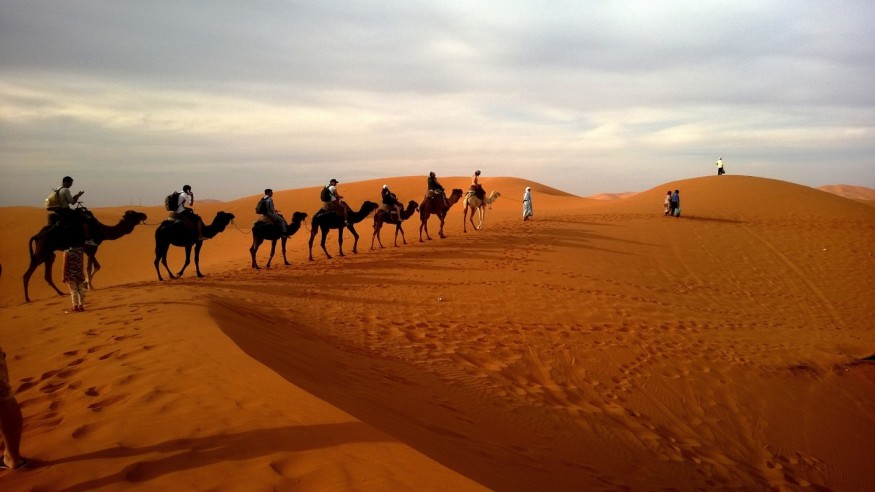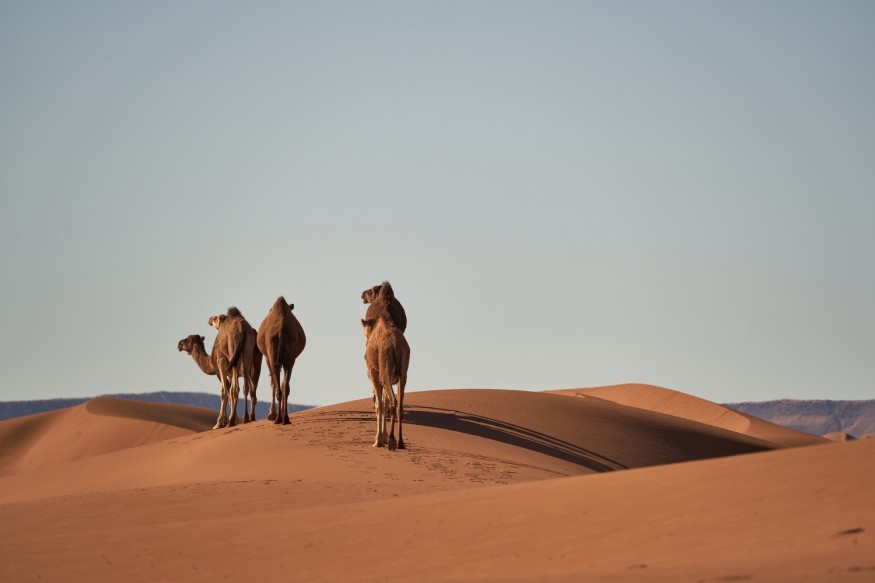
Camel Crossing
The signal was activated on Sunday in a tourist hotspot near Dunhuang City, Gansu province, according to the Chinese state media outlet ECNS.
According to ECNS, camel-riding tours are a major draw for tourists to the region.
Visitors to Mingsha Mountain and Crescent Spring, on the other hand, would no longer be at risk of colliding with camels, thanks to a new traffic signal that turns green to allow the animals to pass and red to make them hesitate.
In the Gansu-Xinjiang desert area, Dunhuang City was the first Chinese-controlled settlement encountered by travelers traveling east on the ancient Silk Road.
The Mingsha Mountain, the Mogao Caves temple complex, and the Yumen and Yangguan passes, which are the Great Wall's westernmost entrances, have all boosted tourism in recent years.
Camel Caravan

A camel train, also known as a caravan, is a group of camels that transport passengers and goods between points on a daily or semi-regular basis.
Camels' ability to survive harsh conditions made them perfect for contact and commerce in the desert areas of North Africa and the Arabian Peninsula for decades, even though they barely traveled faster than a human. Camel trains were also used on a limited basis in other parts of the world. They have been gradually replaced by motorized automobiles or air traffic since the early twentieth century.
The Tuareg, Shuwa, and Hassaniyya, as well as culturally affiliated communities like the Toubou, Hausa, and Songhay, use camel trains the most between North and West Africa. These camel trains transport goods across the Sahara Desert and the Sahel. Trains run as far south as central Nigeria in the west and northern Cameroon in the east, and as far north as northern Kenya in the middle. The Arabian Peninsula was a vital trading route between India and Abyssinia in antiquity.
Chinese Caravans

Camel trains have long been used in trans-Asian trading routes, such as the Silk Road. Camels caravans connected the Beijing/Shanxi area of eastern China with Mongolian centers (Urga, Uliastai, Kobdo) and Xinjiang as late as the early twentieth century.
The roads crossed Mongolia's interior and exterior.
In 1926 a camel caravan crossed northern China for five months with a caravan from Hohhot to Gucheng via Inner Mongolia. The arrival of foreign steamships and the construction of the first railways in eastern China increased demand for caravan trade as they improved access to the world market for such western Chinese products.
Caravan Inns
Caravanserai were inns that dotted the path of a long caravan journey. These roadside inns catered to travelers traveling along well-traveled trading routes like the Silk Path and the Royal Road. Without caravanserai to provide necessary provisions and assistance to traders and passengers, lengthy trading routes would be difficult to achieve effectively and profitably.
For the latest news from the animal kingdom, don't forget to follow Nature World News!
© 2025 NatureWorldNews.com All rights reserved. Do not reproduce without permission.





